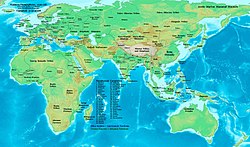This article includes a list of general references, but it lacks sufficient corresponding inline citations .(January 2020) |
| Years |
|---|
| Millennium |
| 2nd millennium |
| Centuries |
| Decades |
| Years |
| 1100 by topic |
|---|
| Leaders |
| Birth and death categories |
| Births – Deaths |
| Establishments and disestablishments categories |
| Establishments – Disestablishments |

Year 1100 ( MC ) was a leap year starting on Sunday in the Julian calendar. It last year of the 11th century and the first year of the 12th century. In the proleptic Gregorian calendar, it was a non-leap century year starting on Monday (like 1900).
